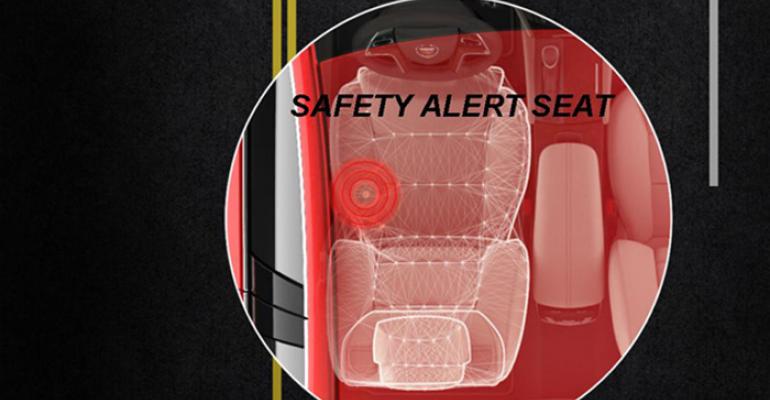MILFORD, MI – General Motors will characterize the new crash-avoidance technology rolling out at its Cadillac division as a driver aid, realizing Americans typically do not want to pay extra for safety.
“We’re telling people we can make them a better driver,” Cadillac marketing chief Don Butler tells WardsAuto during a demonstration of the technologies coming on ’13 ATS, XTS and SRX models.
“We’re not Volvo,” he adds, referring to the Swedish auto maker that uniquely has built its brand around safety. “Safety will never be part of our core message.”
The Cadillac Driver Awareness and Driver Assist packages use a combination of crash-avoidance technologies to enhance vehicle safety.
The Driver Awareness Package, launching this spring on the new-for-’13 XTS large sedan, includes alerts and warnings to prevent forward collisions, unintended lane departures and incursions by other vehicles into side- and rear-blind zones.
The Driver Assist Package, available in the fall on the XTS, includes adaptive cruise control, collision preparation and automatic front- and rear-braking systems.
Butler says the awareness package will be rolled into another optional technology package on the XTS. Pricing has not been determined. The pricier assistance package would be a stand-alone option on the XTS.
The new-for-’13 ATS small sports sedan and SRX midsize cross/utility vehicle, which receive a number of updates for ’13, also will get the two packages. But they will be optional in those vehicles, reflecting the greater number of build combinations and lower pricing for the two models.
Most other luxury auto makers follow the same path Cadillac has chosen. BMW, for example, brands its suite of active safety technologies as “BMW ConnectedDrive.” The German auto maker also varies by model which safety items go into larger optional technology-focused packages or can be chosen a la carte.
Some BMW active safety items, such as parking assistance, come standard.
Butler says cost ultimately will determine when Cadillac can start making some of the driver awareness and assistance features standard, drawing a comparison with antilock braking systems.
In an industry first, Cadillac will use directional tactile sensation with the active safety technologies to warn drivers of a threat. Vibrating pulse patterns from the left, right or simultaneous sides of the driver’s seat-bottom bolsters alert of an impending threat.
For example, if a driver drifts over the roadway’s center line, a pulse is sent to the left bolster. If a forward or rear collision is imminent, pulses come through both bolsters.
And with some technologies in the package, the car can brake automatically if the driver does not respond soon enough.
The automatic-braking technology is smart enough to know when not to intervene. During testing here, the system senses when contact with an object is intended and does not slow the vehicle.
One reason for adding decision-making ability to the car, GM engineers say, is because some people push snow from the driveways with the bumpers of their vehicles.
GM thinks directional tactile sensations from the seats are more effective than audible sounds, and the auto maker bets consumers will prefer it because it keeps the event private to the driver.
“This isn’t technology for technology’s sake, either,” Butler adds. “At the end of the day, its success will be determined by how well it interacts with our customers.”
All of the Cadillac active safety systems rely on sophisticated radar and sensors onboard the cars, which recently have come down in cost enough to make them affordable to more buyers.
GM also demonstrates at its proving grounds here advances it has made in the field of autonomous driving.
A Cadillac SRX outfitted with the foundational technologies of lane-keeping and adaptive cruise control makes loops around the proving ground’s test track without the driver’s hands on the wheel or feet on the brake or accelerator.
GM engineers even sneak a “rabbit” in front of the autonomous SRX to suddenly cut the test car off at 60 mph (97 km/h). The SRX slows to avoid the collision and then runs itself back up to speed after the threat.
Alan Taub, GM’s vice president of research and development, says work in the field of active safety and autonomous driving reflect how the industry has moved from a focus on protecting passengers in a crash to eliminating the crash altogether.
“If I can make a vehicle that does not crash, why not make one that drives itself?” he asks.
Ironically, legendary GM design boss Harley Earl made that very attempt more than 50 years ago with the Cadillac Cyclone concept car.
The Cyclone used military radar to detect obstacles and stop autonomously, but the technology for the car to know where to go did not exist at the time. Today’s lane-keeping technology, which uses sensors to pick up roadway lines, solves that dilemma.




